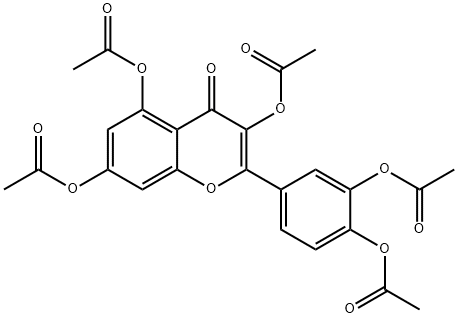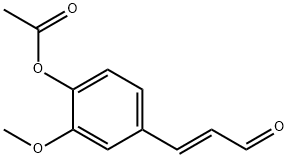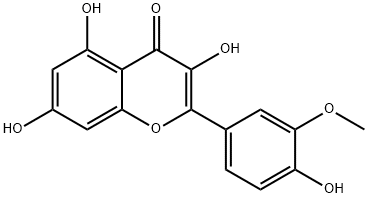Pentaacetylquercetin , ≥98% , 1064-06-8
| Pack Size | Price | Stock | Quantity |
| 10mg | RMB500.00 | In Stock |
|
| 50mg | RMB1624.00 | In Stock |
|
| 100mg | RMB2460.00 | In Stock |
|
| 500mg | RMB11172.00 | In Stock |
|
| others | Enquire |
PRODUCT Properties
| Melting point: | 193 °C |
| Boiling point: | 666.4±55.0 °C(Predicted) |
| Density | 1.45±0.1 g/cm3(Predicted) |
| storage temp. | Store at -20°C |
| solubility | Dichloromethane, Ethyl Acetate |
| form | Solid |
| color | Beige |
Description and Uses
Pentaacetylquercetin is a pentaacetylated derivative of the flavonoid quercetin that has diverse biological activities, including antioxidant, anti-inflammatory, and anticancer properties. It scavenges 2,2-diphenyl-1-picrylhydrazyl (DPPH; ) radicals in vitro (IC50 = 3.74 μg/ml) and inhibits iron(II) chloride-induced lipid peroxidation in rat liver mitochondria (IC50 = 20.2 μg/ml). Pentaacetylquercetin inhibits LPS-induced increases in nitrite (IC50 = 8.7 μM) and PGE2 production, as well as inducible nitric oxide synthase (iNOS) and COX-2 levels, in RAW 264.7 cells when used at concentrations of 20 and 40 μM. It also inhibits the growth of HL-60, U937, and SK-MEL-1 cells (IC50s = 38, 25, and 58 μM, respectively).
[5,7-Diacetyloxy-2-(3,4-diacetyloxyphenyl)-4-oxochromen-3-yl] Acetate is an intermediate in the synthesis of Quercetin Dihydrate (Q509500), which is a lavonoid with anticancer activity. It is a mitochondrial ATPase and phosphodiesterase inhibitor. It Inhibits PI3-kinase activity and slightly inhibits PIP kinase activity. Quercetin has antiproliferative effects on cancer cell lines, reduces cancer cell growth via type II estrogen receptors, and arrests human leukemic T cells in late G1 phase of the cell cycle.




